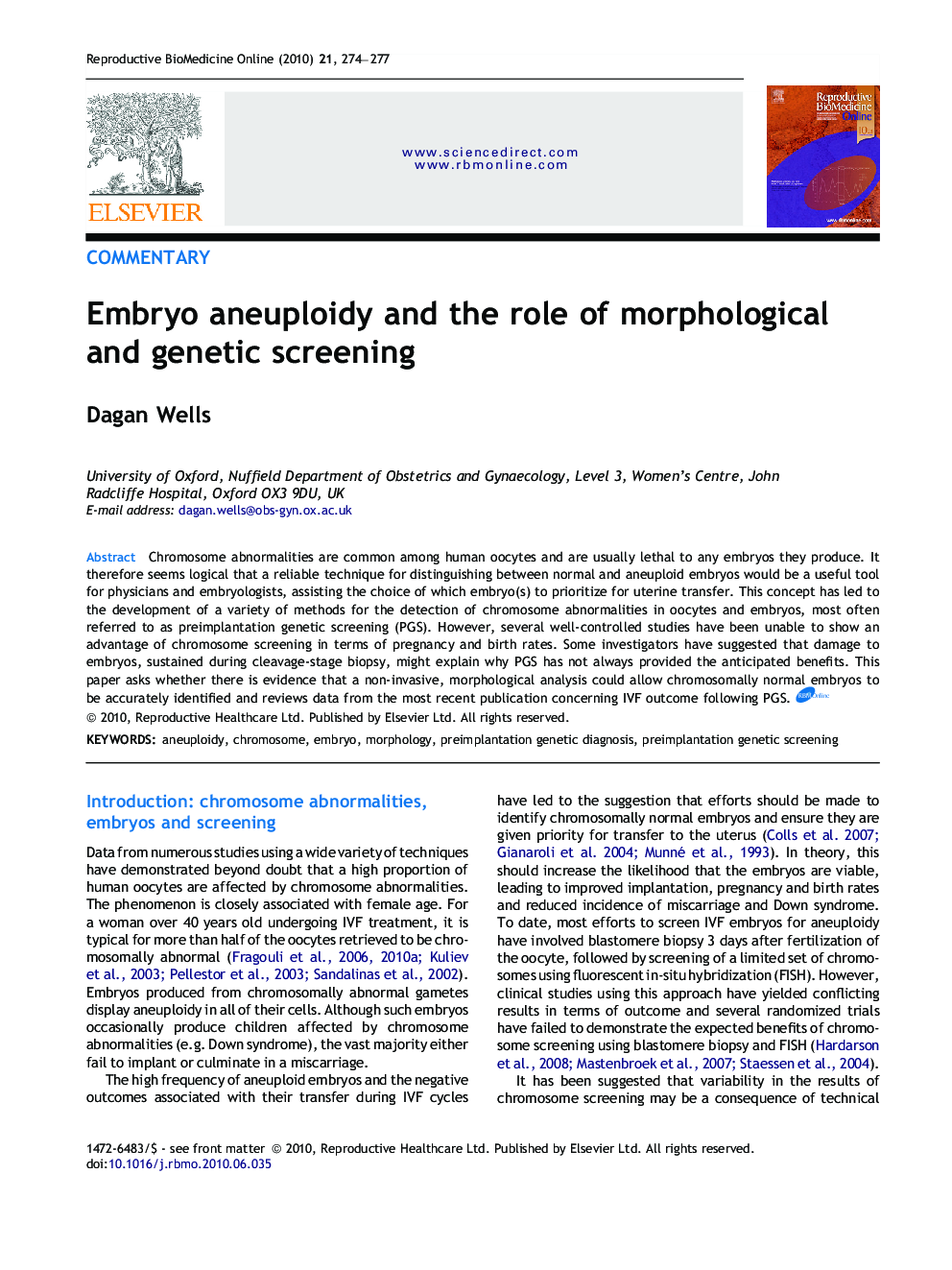| Article ID | Journal | Published Year | Pages | File Type |
|---|---|---|---|---|
| 3971503 | Reproductive BioMedicine Online | 2010 | 4 Pages |
Chromosome abnormalities are common among human oocytes and are usually lethal to any embryos they produce. It therefore seems logical that a reliable technique for distinguishing between normal and aneuploid embryos would be a useful tool for physicians and embryologists, assisting the choice of which embryo(s) to prioritize for uterine transfer. This concept has led to the development of a variety of methods for the detection of chromosome abnormalities in oocytes and embryos, most often referred to as preimplantation genetic screening (PGS). However, several well-controlled studies have been unable to show an advantage of chromosome screening in terms of pregnancy and birth rates. Some investigators have suggested that damage to embryos, sustained during cleavage-stage biopsy, might explain why PGS has not always provided the anticipated benefits. This paper asks whether there is evidence that a non-invasive, morphological analysis could allow chromosomally normal embryos to be accurately identified and reviews data from the most recent publication concerning IVF outcome following PGS.During an IVF cycle, it is typical for several embryos to be produced. However, not all of these embryos will have the same chance of producing a child. One of the main reasons for the variability in embryo potential is chromosome abnormality. This problem is common in embryos and causes them to fail to implant or miscarry. In order to maximize the success rates of IVF treatment, it is important to make sure that the embryos transferred to the uterus are chromosomally normal. This paper considers two possible methods for the identification of embryos with the correct number of chromosomes: morphological analysis (evaluation of the appearance of the embryo under the microscope) and preimplantation genetic screening (a method based upon testing of cells biopsied from the embryo). These alternative strategies are discussed with specific reference to the findings of another recent paper published in this journal.
